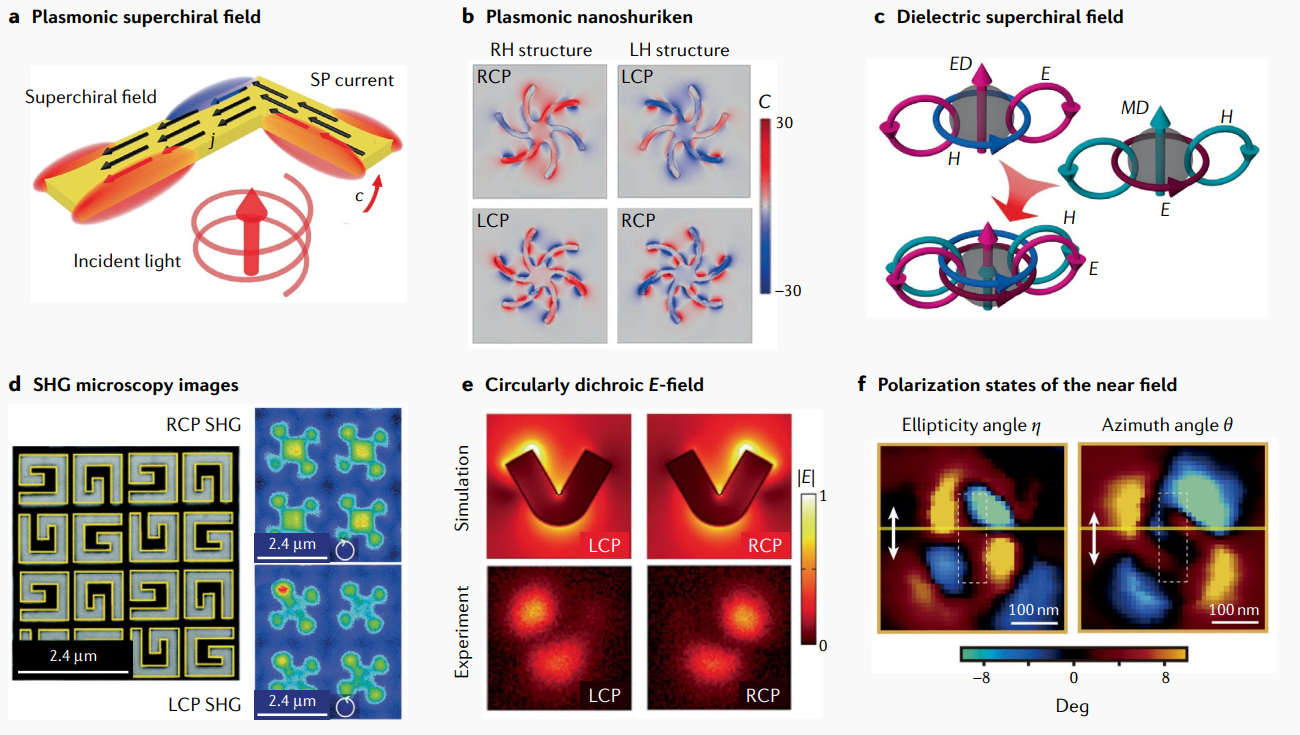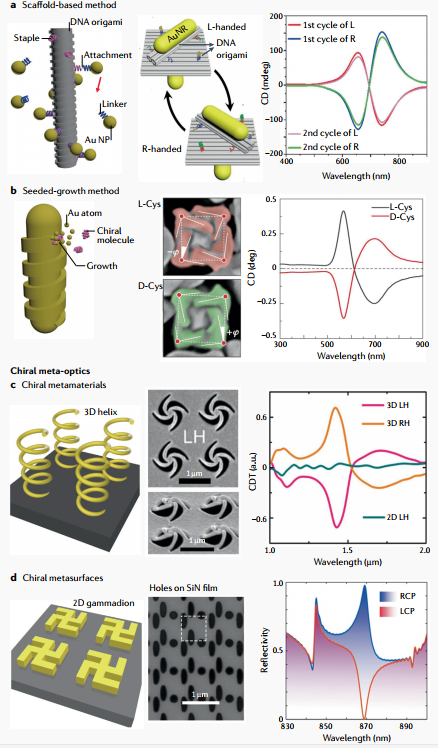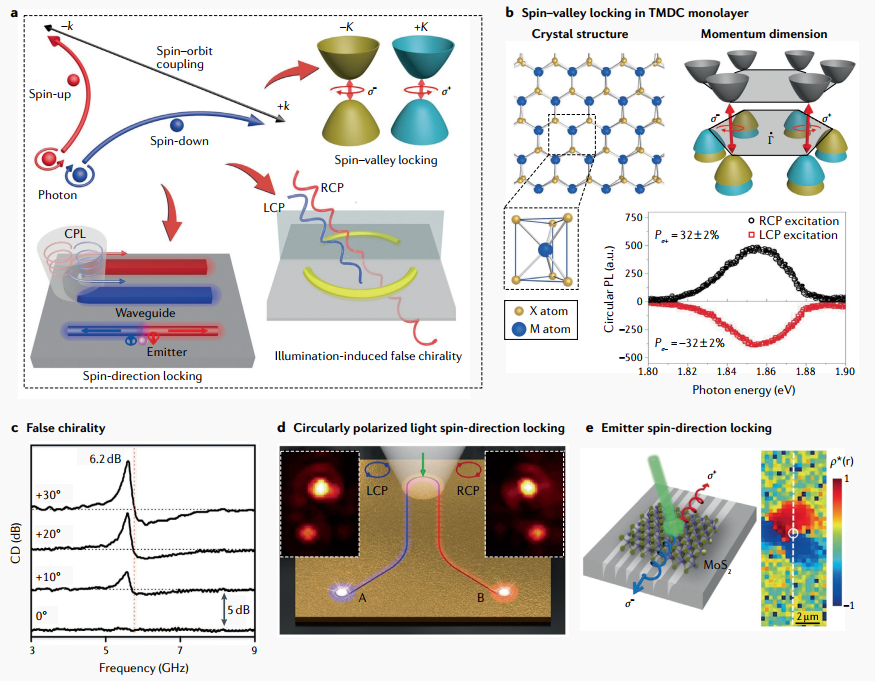
【Link:https://www.nature.com/articles/s42254-021-00391-6】
Nanoscopic chiroptics studies the spin-dependent asymmetric light–matter interactions at the nanoscale, where the asymmetry can stem from the intrinsic properties of materials, structures, light or combinations thereof. With the emergence of low-dimensional materials platforms, such as metasurfaces, transition metal dichalcogenides and perovskites, nanoscopic chiroptics has been extended from the far field to the near field, and further developed from the spatial dimension, to the momentum dimension and the integrated spatial–momentum dimension.
This expansion of nanoscopic chiroptics across dimensions has uncovered new physical mechanisms and manifestations of chiral effects. It also led to applications such as valleytronics, chiral sensing and chiral photochemistry. The development and prospect of integrated optics, photochemistry, quantum optics and biochemical synthesis and analysis are also discussed.

Fig. 1: Near-field chirality. (a) Superchiral field generated around a plasmonic nanostructure. (b) Superchiral field distributions of the chiral plasmonic shuriken nanostructures for right-handed circularly polarized (RCP) and left-handed circularly polarized (LCP) incidence.(c) Overlapping the electric and magnetic dual dipoles (ED and MD) of a dielectric nanostructure for the enhancement of optical chirality. (d) Second-harmonic generation (SHG) intensity distributions of a G-shaped nanostructure array (shown on the left) for RCP and LCP illuminations. (e)Circularly dichroic electric field distributions of the plasmonic V-shaped nanoantennas in simulations and experiments. (f) Local distributions of the ellipticity angle η and azimuthal angle θ of a gold nanorod illuminated by linearly polarized light.

Fig. 2: Chiral nanosystems with far-field chiroptical properties. (a) Schematic of the scaffold-based method (left). Chiral crossed gold nanorod (AuNR) dimers assembled by DNA origami (middle). Structural reconfiguration between the left-handed and right-handed states leads to the mirrored circular dichroism (CD) spectra (right). (b) Schematic of the seeded-growth method (left). The scanning electron microscope (SEM) images (middle) and measured CD spectra (right) of the chiral plasmonic nanocrystals as synthesized by L-Cys and D-Cys. (c) Schematic of chiral metamaterials (left). Measured CD spectra in transmission (CDT) for 2D left-handed (LH), 3D LH and 3D right-handed (RH) pinwheel nanostructures, respectively. The SEM images of the 3D LH pinwheels are shown on the left, scale bar: 1μm. (d) Schematic of chiral metasurfaces (left). The SEM image and simulated reflectivity spectra of the chiral dielectric metasurface under right-handed circularly polarized (RCP) and left-handed circularly polarized (LCP) incidence.

Fig. 3: Chiral effects manifested in the momentum dimension. (a) Photons with opposite spins exhibiting different behaviour in the momentum dimension through spin–orbit coupling.(b) Crystal and electronic structures of group VI transition metal dichalcogenide monolayer.(c) Variation of external chirality with incident Angle.(d) Spin-direction locking demonstrated on an integrated optical nanocircuit.(e) Schematic of the valley exciton separation in an asymmetric groove array.